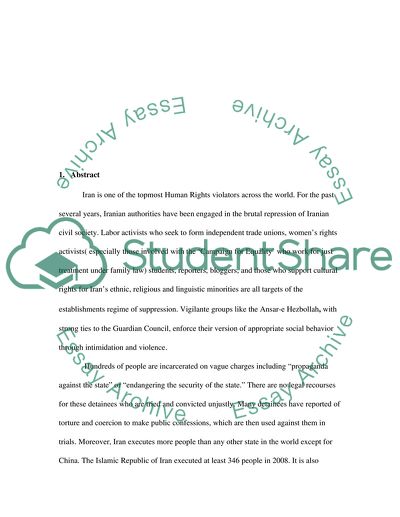Cite this document
(Human Rights in the Islamic Republic of Iran Research Paper, n.d.)
Human Rights in the Islamic Republic of Iran Research Paper. Retrieved from https://studentshare.org/politics/1726653-human-rights-in-the-islamic-republic-of-iran
Human Rights in the Islamic Republic of Iran Research Paper. Retrieved from https://studentshare.org/politics/1726653-human-rights-in-the-islamic-republic-of-iran
(Human Rights in the Islamic Republic of Iran Research Paper)
Human Rights in the Islamic Republic of Iran Research Paper. https://studentshare.org/politics/1726653-human-rights-in-the-islamic-republic-of-iran.
Human Rights in the Islamic Republic of Iran Research Paper. https://studentshare.org/politics/1726653-human-rights-in-the-islamic-republic-of-iran.
“Human Rights in the Islamic Republic of Iran Research Paper”, n.d. https://studentshare.org/politics/1726653-human-rights-in-the-islamic-republic-of-iran.


